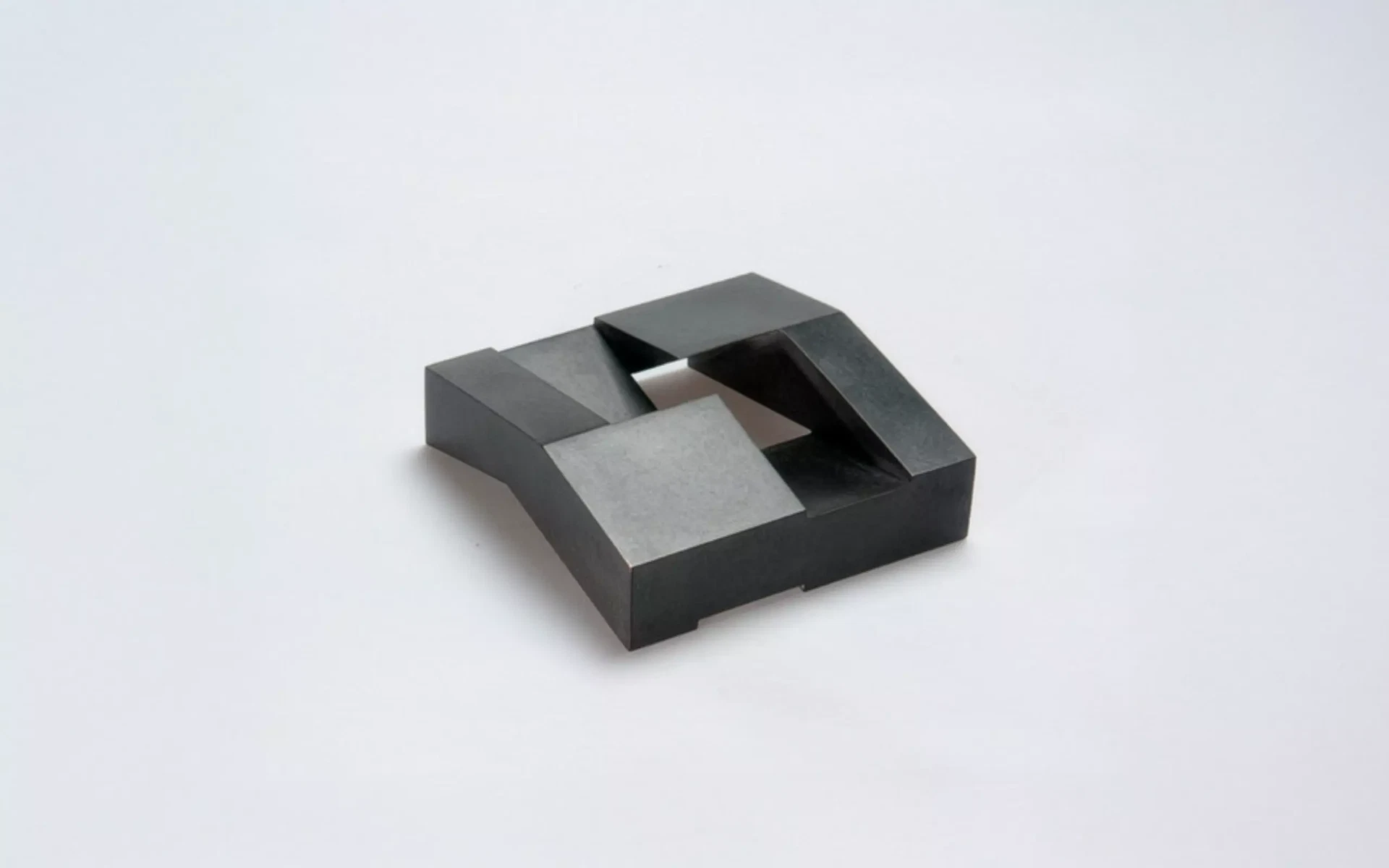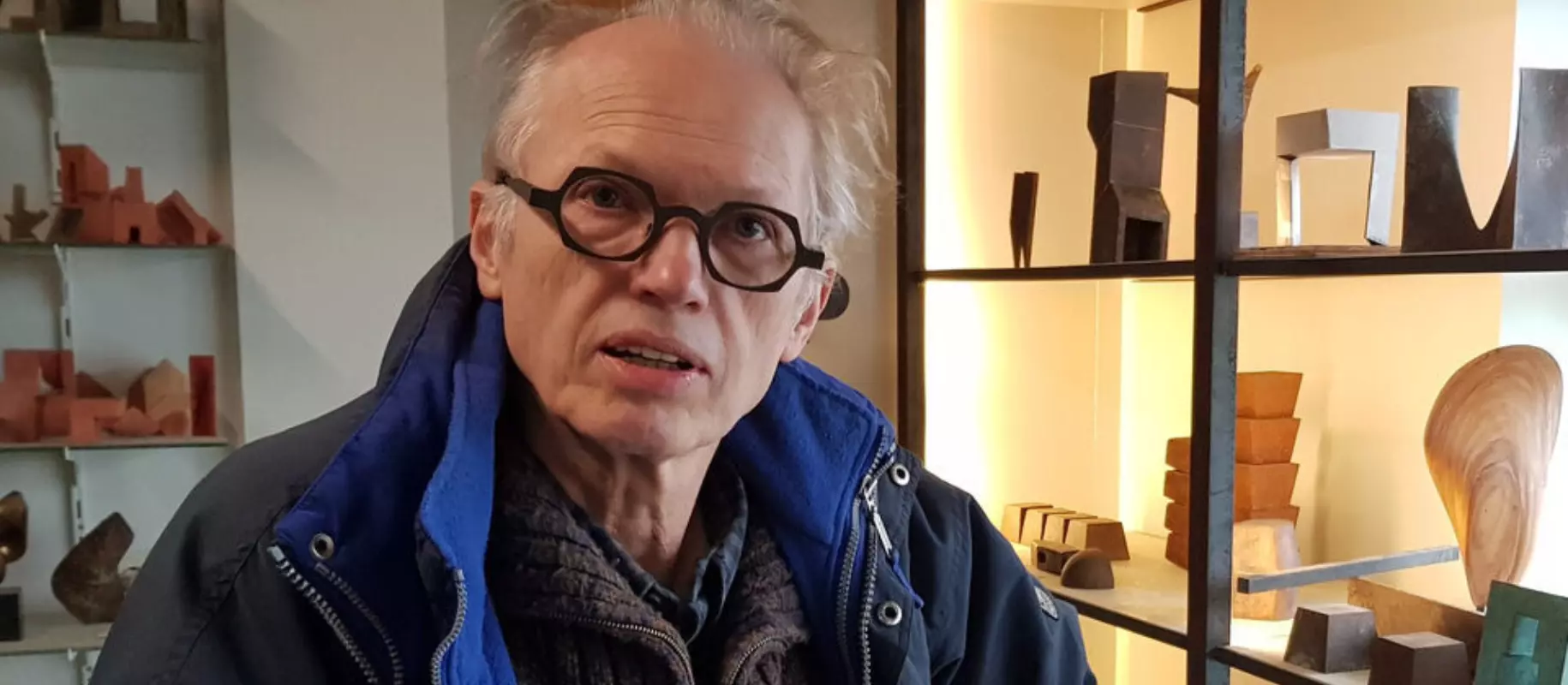Niko de Wit (1948)
Niko de Wit (1948) studied sculpture at the Academy in Tilburg and settled in this city after completing his studies. He has executed numerous monumental commissions for companies, institutions, and municipalities, including in Amsterdam, Den Bosch, Tilburg, Etten-Leur, Oosterhout, Utrecht, and Goirle.
Simple, clean, architectural forms intrigue the artist; within them, he seeks contrasts and opposites, such as between straight and curved lines. Rhythmic stacking of forms, shifts, openings, and steps are typical elements in his work. His sculptures in public spaces are often tilted or slanted, frequently poised on the edge of physical balance. Old abandoned houses and geometric shapes from African culture—such as those found in mastabas and Nubian houses—regularly recur in his work. He is an admirer of the architect Carlo Scarpa, to whom he dedicated a medal in 1995 titled Hommage aan Carlo Scarpa (Homage to Carlo Scarpa). De Wit created his first medal, Getrapt blok (Stepped Block), in 1990 on commission from the Vereniging voor Penningkunst (Society for Medallic Art), and has embraced this small sculptural form ever since.
For De Wit, there is essentially no difference between a large sculpture and the small format of a medal. His oeuvre reveals a constant interaction between medals and sculptures: small forms sometimes become large sculptures, and vice versa. The fact that a medal can be positioned in various ways or turned in the hand—creating ever-changing perspectives and effects of light and shadow—is in itself exciting enough to invite endless experimentation. His work can be described as abstract, geometric, pure, and formally self-contained.
Bronze is his preferred material, though he occasionally works in plexiglass and iron.

